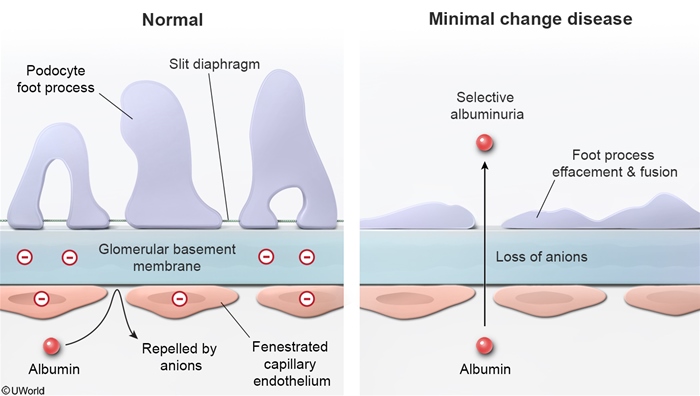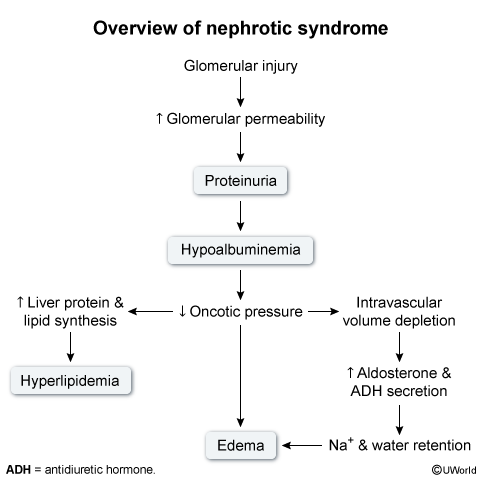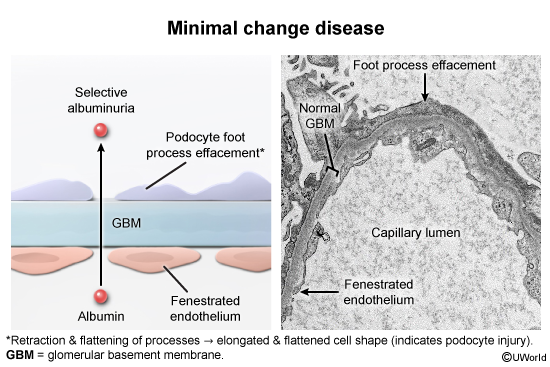Minimal Change Disease
Article Sections
Introduction
Minimal change disease (MCD) is a type of nephrotic syndrome caused by glomerular podocyte dysfunction. MCD is the most common cause of nephrotic syndrome in children (~90% of cases), but it can also develop in adults (~10% of cases of nephrotic syndrome in adults).
Pathophysiology
The pathogenesis of MCD likely begins with dysregulation of T-cell subpopulations. Dysfunctional T cells cause an overproduction of glomerular permeability factor (eg, IL-13) that damages the capillary wall of the glomerulus, leading to cytokine-mediated disruption of the actin cytoskeleton within podocytes, resulting in podocyte injury and effacement (Figure 1). Podocyte effacement causes a loss of charge selectivity across the glomerular basement membrane, resulting in the selective loss of urinary anions (particularly albumin) and leading to massive proteinuria. The resulting hypoalbuminemia leads to decreased plasma oncotic pressure with renal sodium retention, resulting in acute-onset, gravity-dependent edema (eg, periorbital, scrotal, tibial).
Continue Learning with UWorld
Get the full Minimal Change Disease article plus rich visuals, real-world cases, and in-depth insights from medical experts, all available through the UWorld Medical Library.
Figures


Images
